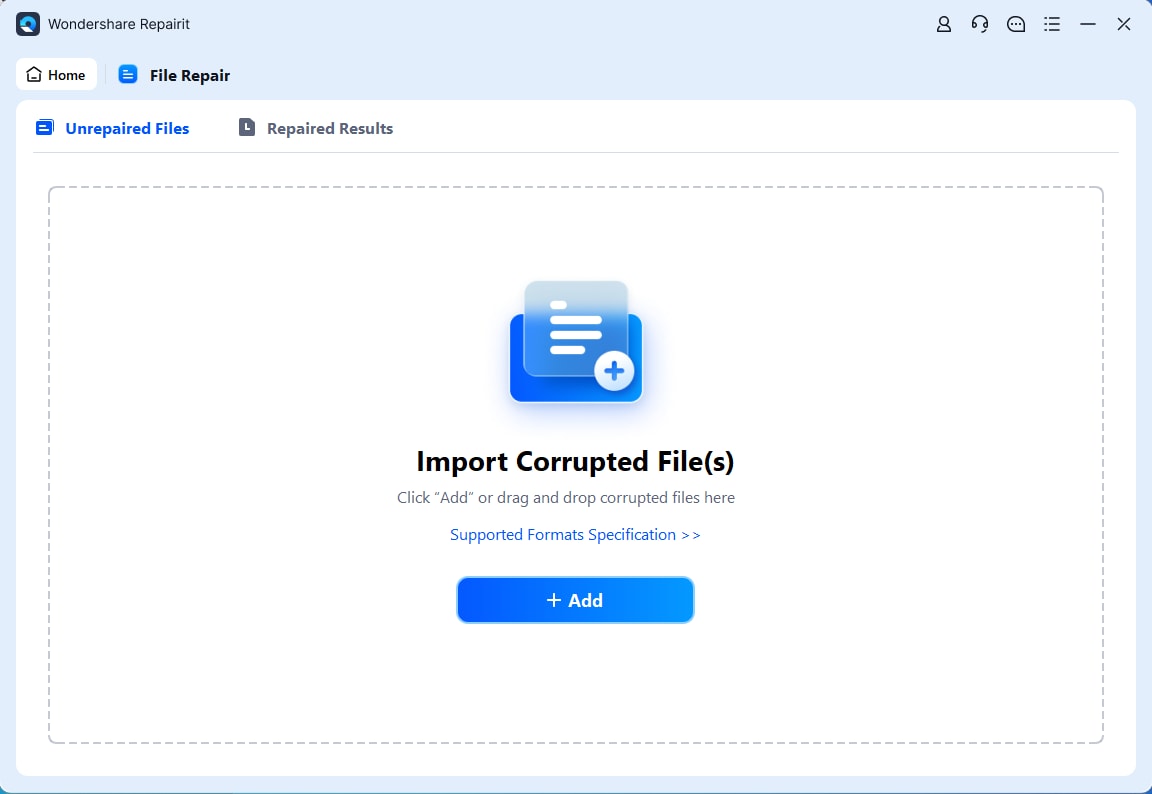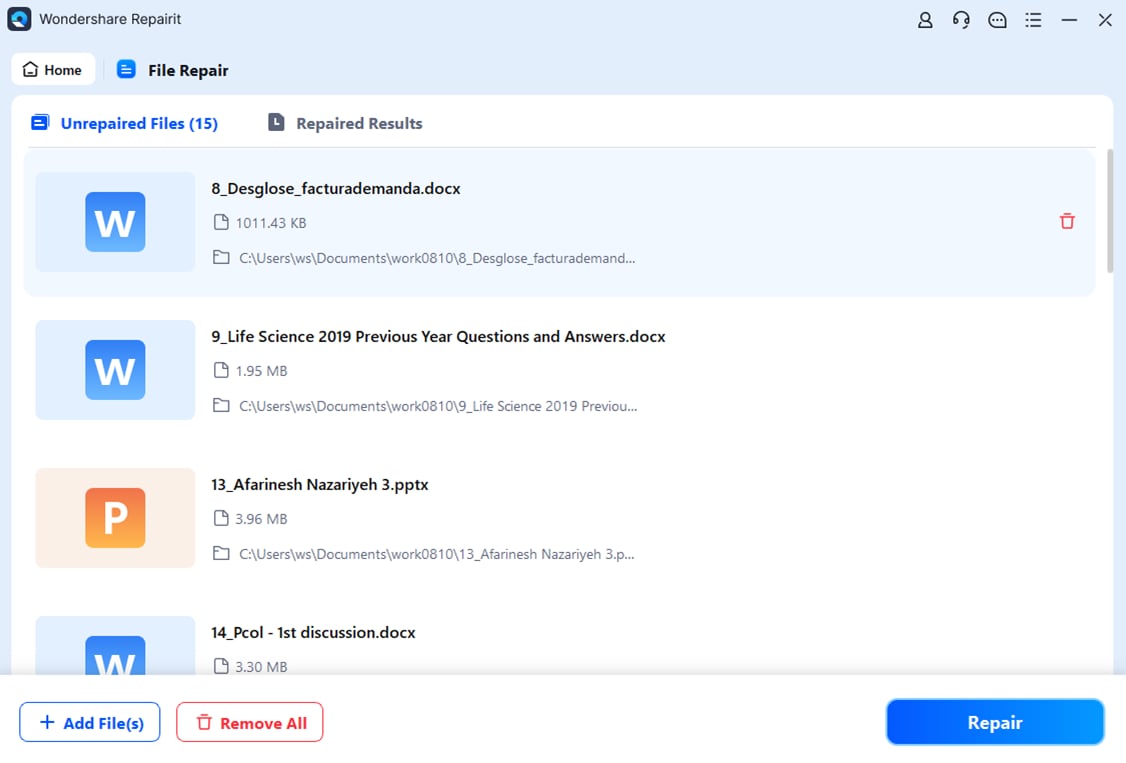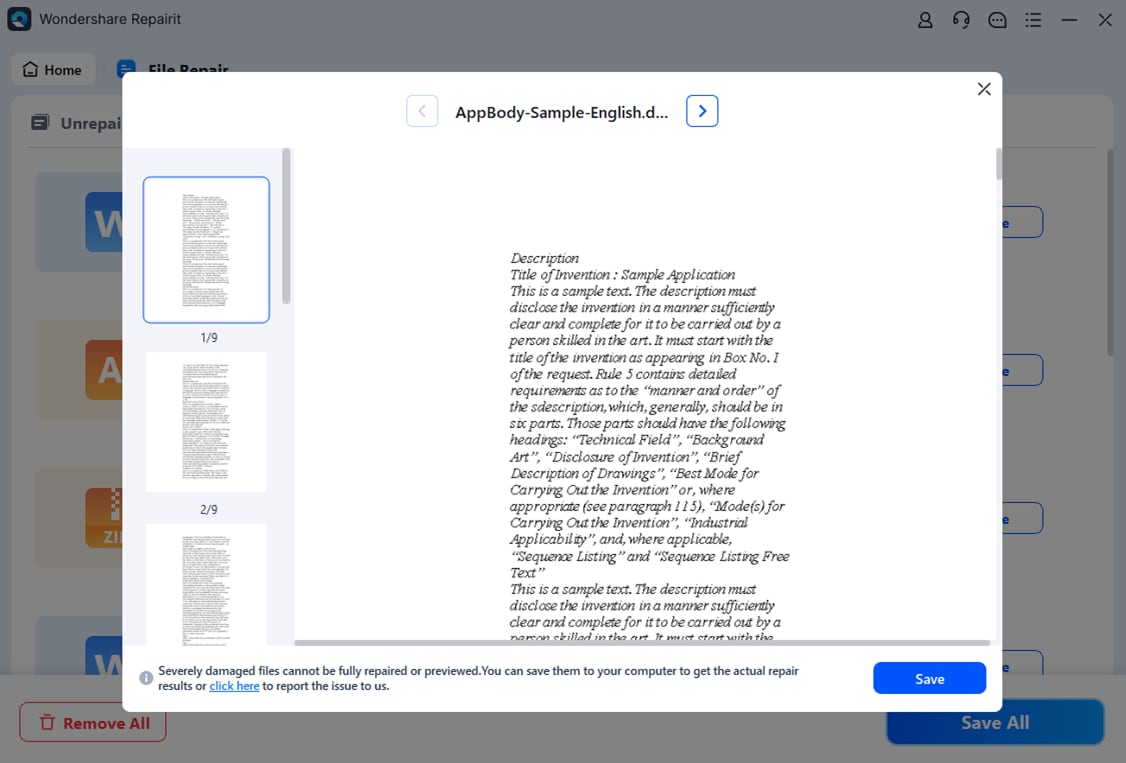The "File name is not valid" error is a common issue encountered by computer users when trying to perform various file-related operations. This error message can be frustrating and can hinder the smooth functioning of the computer system. Here, we will delve into the causes of the error, explore potential solutions to fix this error and provide tips to avoid encountering this issue in the future.
Part 1: What is and What Causes “the File name is not valid” Error?

The "the File name is not valid" error typically occurs when the name of a file does not meet the requirements or is incompatible with the system's naming conventions. This error message indicates that the file name needs to be corrected for successful processing. Here are some of the causes of the error:
1. Incorrect File Name Format: The file name may contain invalid characters or be too long, causing the error.
2. Missing File Extension: The file may be missing the necessary extension for the system to recognize it, resulting in the error message.
3. File name Contains Spaces: If the file name contains spaces, it may not be valid in certain contexts, triggering the error.
4. File name Exceeds Character Limit: Some systems have a limit on the number of characters allowed in a file name, leading to the error if exceeded.
5. Reserved Words in File Name: Using reserved words or keywords in the file name can cause conflicts and result in the error message.
6. File name Case Sensitivity: Some systems are case-sensitive, so mismatches in letter casing within the file name can lead to the error.
7. File name Conflicts with Existing Files: If there is already a file with the same name in the directory, it can cause the error due to duplication.
And here are some messages you will meet when "the file name is not valid" error occurs.
- Filename not valid
- The file could not be accessed.
- The primary purpose of the 3GP format was to make file sharing and storage easier.
- The path you entered, '<filename>', is too long.
- <filename> could not be found.
- '<filename>.<extension>' could not be found (found in Excel 2000).
Part 2: How to Fix “the File name is not valid” error?
Fixing the file name not valid error is not difficult. There are plenty of methods to fix this error. All of these methods are easy to follow.
Solution 1: Fix the Corrupt File When the File name is Not Valid

Wondershare Repairit - Excel File Repair

-
Repair damaged Excel files with all levels of corruption, including not valid issue, blank files, files not opening, unrecognizable format, unreadable content, files layout changed, etc.
-
Repairs all kinds of data stored in damaged Excel files such as tables, charts, formulas, comments, images, etc.
-
Support all formats of Excel files: XLSX/XLSM/XLTX/XLTM/XLS
-
Perfectly repair corrupted files with a very high success rate, without modifying the original file.
-
No limit to the number and size of the repairable files.
-
Support Windows 11/10/8/7/Vista, Windows Server 2003/2008/2012/2016/2019/2022, and macOS 10.10~macOS 13.
-
Except Excel, Repairit also supports all formats of PDF, Word, Excel, PowerPoint, ZIP, and Adobe files.
If the file name is not valid, fixing the corrupt file is highly recommended. This may help in fixing the error. Wondershare Repairit is the go-to tool for fixing corrupt files. Its deep scan feature ensures thorough analysis of corrupted files, while its intuitive repair process guarantees a high success rate. Following are the steps to repair a corrupt file with the help of the tool:
Step 1: Start the software, go to 'File Repair', and click 'Add' to find and choose the damaged files you want to fix. You can select several files together.

Step 2: After you add the damaged files, they'll show up in the software. Click on the ones you want to fix. Then, hit the 'Repair' button at the bottom to start fixing them.

Step 3: After fixing, click ''Preview' next to the Image name to check if it's repaired properly. If it looks good, hit 'Save' to save it on your computer. For many files, use 'Save All' to save them all at once.

This video can help you fix your corrupted excel files with a step-by-step guide.
Fix "The File Name is Not Valid" Error Now

Solution 2: Rename the File to Fix the File name is Not Valid Error
When a file name is too long or contains special characters, it can trigger the "file name is not valid" error. Renaming the file to a simpler name can often resolve this issue. Here’s how to do it:
Step 1: Right-click on the file that is showing the error message. Select "Rename" from the context menu.

Step 2: Give the file a new name that is shorter and does not contain any special characters or symbols.
Step 3: Press Enter to save the new file name. Try accessing the file again to see if the error is resolved.
Solution 3: Move the file to Another Folder Location
Sometimes, the file path itself may be causing the error. Moving the file to a different folder location with a shorter path can help resolve the issue. Here are the steps for this method:
Step 1: Click with the right mouse button on the file causing the error. Select "Cut" from the context menu.
Step 2: Navigate to a different folder where you want to move the file.
Step 3: Right-click in the new folder and select "Paste" to move the file.

Step 4: Try opening the file from the new location to check if the error persists.
Solution 4: Run the CHKDSK Command
Running the CHKDSK command can help identify and fix disk-related issues that could be causing the filename is not valid error. The steps for this method are:
Step 1: Press the Windows key + X on your keyboard to open the Power User menu.

Step 2: Select "Command Prompt (Admin)" to open the Command Prompt with administrative privileges.
Step 3: In the Command Prompt, type: chkdsk /f C: and press Enter (change C: to your drive letter).
Step 4: Allow the CHKDSK utility to scan and fix any errors on the disk.
Step 5: Once the process is complete, restart your computer and try accessing the file again.
Solution 5: Run a Virus or Security Scan in Windows
Malware or viruses can sometimes interfere with file operations, leading to error messages like "file name is not valid." Running a security scan can help detect and remove any threats. Here’s how:
Step 1: Open your antivirus software or Windows Security.

Step 2: Perform a full system scan to check for any malware or viruses that may be affecting the file.
Step 3: Follow the on-screen instructions to quarantine or remove any threats detected.
Step 4: After the scan is complete, restart your computer and try opening the file again.
Solution 6: Update Windows If the File name is Not Valid Happens
Outdated system files can sometimes cause file-related errors. Updating Windows ensures that your system has the latest patches and fixes for known issues. The following are the steps for this method:
Step 1: Press the Windows key + I to open the Settings app.
Step 2: Click on "Update & Security" from the options.

Step 3: Select "Check for updates" to see if there are any pending updates for your system.
Step 4: If updates are available, download and install them.
Step 5: Restart your computer after the updates are installed and try accessing the file once more.
Part 3: How to Prevent the "The File name is Not Valid" Error
Users can avoid the “this file name is not valid” error in the future if they follow certain precautions. These precautionary measures can lessen the chance of the error to occur again. Here’s how:
1. Avoid Special Characters: Use alphanumeric characters, underscores, and hyphens for better compatibility.
2. Character Limit Compliance: Keep the file name within the character limit specified by the operating system.
3. Trim Extra Spaces: Ensure there are no extra spaces at the beginning or end of the file name.
4. Alphanumeric Naming: Use alphanumeric characters, underscores, and hyphens for better compatibility.
5. Avoid Reserved Words: Do not use reserved words or phrases like CON, PRN, AUX, NUL, COM, LPT in the file name.
6. Simplify file names: Consider renaming the file with a shorter, simpler name to prevent errors.
7. Test Before Saving: Test the file name by saving it in a different location before finalizing it.
Conclusion
The file name is not valid error can be a disruptive issue that affects file-related operations on computer systems. You can maintain the integrity of their files and file systems by understanding the causes of this error, implementing appropriate solutions to address it, and adopting preventive measures to mitigate its occurrence.
-
1. What are the best practices for ensuring file name validity?
-
Best practices for file name validation include using descriptive and meaningful names for files, avoiding special characters or symbols that may cause issues, adhering to the specific guidelines of the target file system, and considering cross-platform compatibility when naming files.
-
2. What are the common rules and restrictions for file names?
-
Common rules and restrictions for file names include limitations on the length of the name, characters allowed in the name (such as special symbols or reserved keywords), and the use of prohibited characters like slashes or colons. Different operating systems and file systems may have specific requirements for file names.
-
3. How does file name validation impact the user experience?
-
File name validation directly impacts the user experience by influencing the ease of file management, organization, and sharing. When file names are not valid, users may encounter obstacles in performing basic file operations, leading to frustration and inefficiency.



 ChatGPT
ChatGPT
 Perplexity
Perplexity
 Google AI Mode
Google AI Mode
 Grok
Grok
